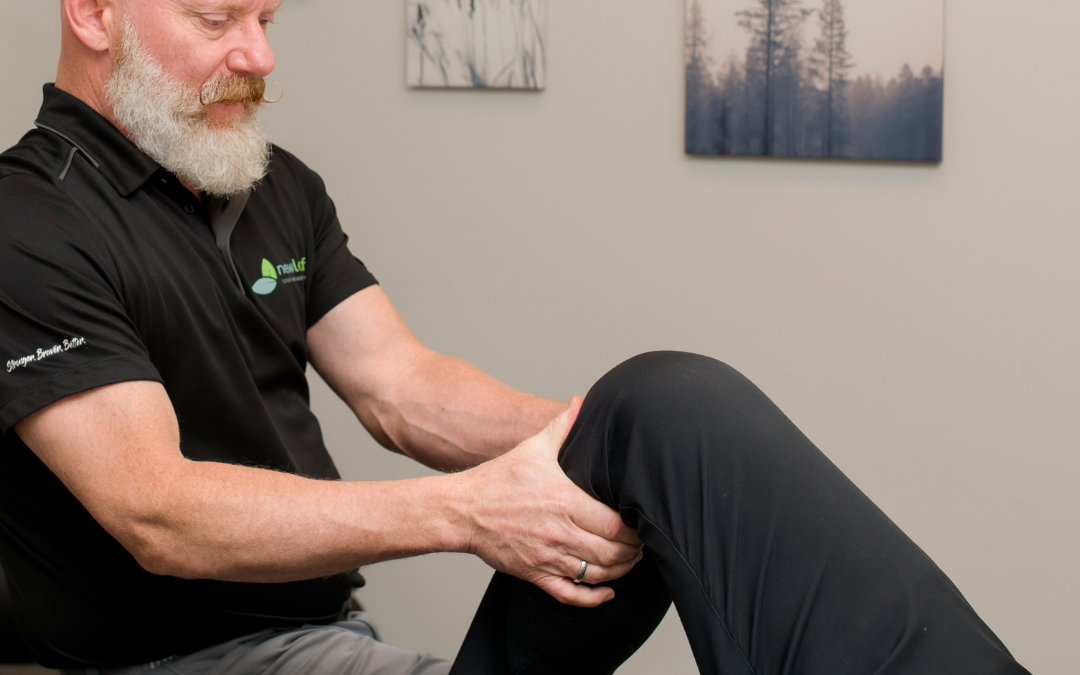
Therapy Options Explained
Undergoing surgery is a significant event that can impact your physical and emotional well-being. While the procedure may be necessary for your health, recovery can often feel daunting. But with the proper support, particularly from a skilled physiotherapist, and a solid post-surgery rehabilitation program you can regain your independence and return to your daily activities more efficiently.
The Role of Physiotherapy in Post-Surgery Rehabilitation
Physiotherapy is a crucial component of post-surgery rehabilitation. It focuses on restoring movement, improving strength, and reducing pain to help patients get back on their feet. Here’s how physiotherapy can aid in your recovery:

- Personalized Exercise Plans
Every surgical procedure and patient is unique, so physiotherapists create tailored exercise programs. They design these plans to meet your needs and recovery goals, ensuring safe and effective rehabilitation.
- Pain Management
Post-operative pain can hinder your progress. Physiotherapists use techniques such as manual therapy and targeted exercises to alleviate pain and discomfort, helping you move more freely.
- Improving Mobility and Strength
A primary goal of physiotherapy is to improve mobility and regain strength. Through structured exercises and therapies, physiotherapists focus on enhancing the function of the affected area, which is critical for restoring your independence.
- Preventing Complications
Prolonged immobility can lead to complications such as blood clots or muscle atrophy. Engaging in a physiotherapy program can help prevent these issues by promoting circulation and maintaining muscle tone.
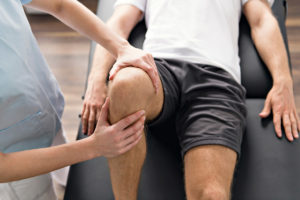
What to Expect from Post-Surgery Rehabilitation Sessions
When you begin your post-surgery rehabilitation program, your physiotherapist will thoroughly assess your condition, surgery details, and personal goals. Here’s what a typical session might involve:
- Assessment – Evaluating your current range of motion, pain levels, and overall condition.
- Goal Setting – Establishing achievable milestones to keep you motivated and on track.
- Treatment Plan – Implementing exercises, manual therapy, and other treatments tailored to your needs.
- Progress Monitoring – Regularly reviewing your progress and adjusting your plan as necessary to ensure optimal recovery.

Tips for Maximizing Your Rehabilitation Success
- Be Consistent – Attend all scheduled physiotherapy sessions and perform any recommended exercises at home.
- Communicate Openly – Keep your physiotherapist informed about any pain or difficulties you experience.
- Stay Positive – Recovery can be challenging, but maintaining a positive mindset is crucial for success.
- Follow Post-Op Guidelines – Adhere to any restrictions or instructions provided by your surgeon and physiotherapist.
For Caregivers
If you’re caring for someone recovering from surgery, your support is essential to their rehabilitation. Encourage them to follow their physiotherapy plan, assist with exercises if needed, and ensure they’re comfortable and supported during this time.
Conclusion
Physiotherapy is an invaluable tool for anyone looking to regain independence after surgery. Working closely with a physiotherapist ensures your recovery is efficient, safe, and tailored to your needs. Don’t hesitate to explore the benefits of physiotherapy as part of your post-surgery rehabilitation process.
Ready to take the first step toward your recovery? Book an appointment with a qualified physiotherapist today and start your journey to reclaim your independence.
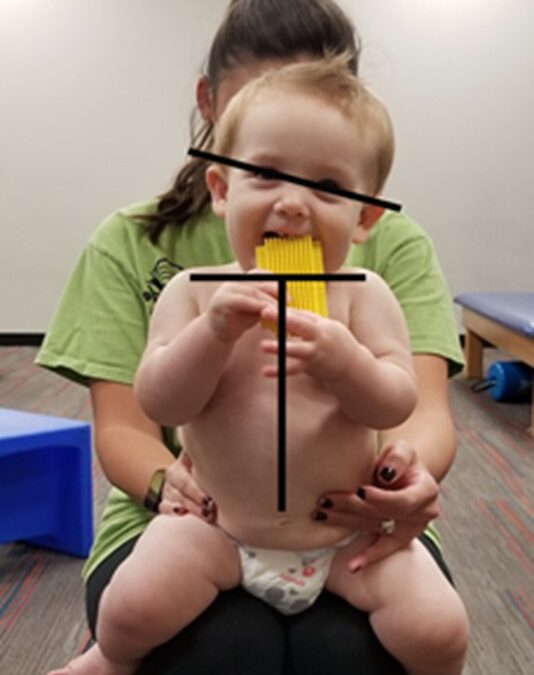
Women's and Children's Health
Becoming a new parent is a thrilling experience, filled with many firsts and precious moments. However, it also comes with its fair share of worries, especially regarding your baby’s health and development. One area that often raises concerns is the physical well-being of infants, particularly issues like torticollis and flat head syndrome. Understanding these conditions and knowing when to seek professional help can significantly impact your baby’s growth and comfort.
Physiotherapy can be a game-changer for addressing physical ailments from an early age. If you’ve noticed that your baby has difficulty turning their head or has developed a flat spot on their head, visiting a physiotherapist can be highly beneficial. Early intervention can prevent long-term issues and promote healthy development.
What are Torticollis and Flat Head Syndrome?

Torticollis
Torticollis, also known as “wry neck,” is a condition where a baby’s neck muscles are tight, causing their head to tilt to one side. This can be due to positioning in the womb or a difficult birth.
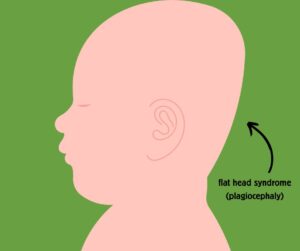
Flat Head Syndrome
Flat head syndrome, or plagiocephaly, occurs when a baby’s head develops a flat spot due to prolonged pressure on one part of the skull. This often happens when babies spend a lot of time lying on their backs.
Both conditions can lead to discomfort and developmental delays if not addressed early.
Signs and Symptoms to Look For
Knowing the signs and symptoms of these conditions is crucial for early detection and intervention. Here’s what to watch for:
Torticollis:
- Head tilted to one side.
- Limited neck movement
- Difficulty turning head in both directions or prefer looking in one direction.
- One shoulder higher than the other
- Difficulty breastfeeding on one side
Flat Head Syndrome:
- Noticeable flat spot on the back or side of the head
- Facial asymmetry
- Misaligned ears
If you notice any of these symptoms, it’s essential to consult a healthcare professional who can provide an accurate diagnosis and recommend appropriate treatment.

The Importance of Early Intervention and Physiotherapy
Early intervention is critical to treating torticollis and flat head syndrome effectively. The sooner these conditions are addressed, the better the outcomes will be. Physiotherapy plays a vital role in treating these conditions by:
- Improving Range of Motion: Physiotherapists use specific exercises to stretch and strengthen the neck muscles, enhancing movement and flexibility.
- Promoting Symmetrical Development: Guided exercises and positioning strategies help ensure your baby’s head and neck develop evenly.
- Enhancing Motor Skills: Addressing these issues early can support overall motor development, helping your baby reach milestones more smoothly.
When is it Too Late for Treatment?
While early intervention is ideal, it’s never too late to seek treatment. Physiotherapists can work with children of all ages to address these conditions, although the earlier you start, the quicker and more effective the treatment tends to be. Treatment for a flat head is less effective after 14 months of age.
Risks of Not Getting Treatment
Failing to address torticollis and flat head syndrome can lead to:
- Permanent facial and skull asymmetry
- Delayed motor skill development
- Persistent neck and back issues

Tips to Prevent Torticollis and Flat Head Syndrome
Prevention is always better than cure. Here are some practical tips to help prevent these conditions:
- Tummy Time: Ensure your baby spends time on their tummy while awake to strengthen neck muscles and reduce pressure on the head.
- Alternate Head Positions: Encourage your baby to turn their head in different directions by alternating which arm you carry them in and which direction you approach them from.
- Vary Sleeping Positions: Alternate your baby’s direction in the crib to prevent favouring one side.
- Limit Time in Car Seats and Carriers: Reduce the time your baby spends in positions that put pressure on their head.
- Use a Supportive Mattress: A firm, flat mattress can help distribute pressure more evenly.
- Use a Support Pillow: Specially designed pillows can help maintain the shape of your baby’s head while sleeping.
Choosing a Physiotherapist
Finding the right physiotherapist is crucial. Look for a professional who specializes in pediatric care and shows a commitment to patient-centred treatment. The therapist’s primary role should be to educate you about your baby’s condition and the treatment options available. If you don’t feel comfortable asking questions or if you leave an appointment feeling confused, consider finding another therapist who better meets your needs.
What to Expect During a Visit
- Initial Assessment: The physiotherapist will thoroughly evaluate your baby’s condition, including a physical examination and a review of medical history.
- Treatment Plan: Based on the assessment, a customized treatment plan will be developed, including exercises, stretches, and positioning techniques.
- Parent Education: You’ll receive guidance on performing exercises at home and tips for daily care to support your baby’s progress.
Conclusion
Monitoring your baby’s development is crucial for their overall health and well-being. If you notice any signs of torticollis or flat head syndrome, seeking professional help early can prevent long-term issues and support your baby’s growth. Remember, you’re not alone on this journey. At Newleaf Total Wellness Centre, we’re here to partner with you in taking proactive steps toward a higher quality of life for your little one.
—
Following these guidelines and seeking early intervention can help ensure your baby’s healthy development and well-being. If you have any questions or want to book an appointment, please get in touch with Newleaf Total Wellness Centre today.

Women's and Children's Health
Women’s health is a complex and diverse field that demands our attention and understanding. At Newleaf Total Wellness Centre, we advocate for proactive and preventative measures to enhance our quality of life. This blog post delves into five crucial health issues that every woman should be well-informed about. We provide insights into risk factors, symptoms, and holistic approaches to prevention and treatment, all of which are essential for maintaining optimal health.

1. Heart Disease & Stroke in Women
Understanding the Issue in Terms of Women’s Health
Heart disease and stroke are significant women’s health concerns, often underestimated in comparison to their impact on men. Despite common misconceptions, cardiovascular diseases claim more female lives annually than any other cause. Factors such as hormonal influences, pregnancy-related complications, and lifestyle choices uniquely affect women’s cardiovascular health. It is crucial to recognize symptoms, which can differ from those experienced by men, and prioritize regular check-ups. Increased awareness, education, and proactive healthcare can help mitigate the risks and improve outcomes for women facing these potentially life-threatening conditions.
Risk Factors
Symptoms
Symptoms of heart disease in women can often be subtler than in men. Common signs include:
- Pain in the neck, jaw, or back
Holistic Approaches to Prevention and Treatment
Physiotherapy: Regular physical activity is crucial. Physiotherapists can design tailored exercise programs to improve cardiovascular health. Physiotherapy plays a vital role in stroke rehabilitation. It helps survivors re-learn skills and adapt to abilities lost due to brain damage.
Massage Therapy: Can reduce stress and lower blood pressure, contributing to heart health. For individuals who have undergone cardiac procedures, massage may aid in their recovery1. The Massage Therapy Foundation (MTF) is funding research to explore this further.
Acupuncture & TCM: These ancient practices help regulate bodily functions and improve cardiovascular health. Health care professionals need to be aware of TCM’s role in heart disease management to provide safe and effective care to patients who use combination therapies 2.
Naturopathic Doctor: Natural remedies and dietary recommendations may help manage risk factors like high blood pressure and cholesterol. Some natural supplements (e.g., omega-3 fatty acids, CoQ10, garlic) may support heart health. Certain herbs (e.g., hawthorn, garlic, ginger) have potential cardiovascular benefits.

2. Breast, Ovarian, and Cervical Cancer
Understanding the Issue in Terms of Women’s Health
Breast, ovarian, and cervical cancers are huge concerns in women’s health globally, each requiring distinct attention and awareness. Breast cancer, the most common among women, affects the breast tissue and can be detected early through regular mammograms and self-examinations. Ovarian cancer, often termed a “silent killer” due to its subtle symptoms, primarily affects the ovaries and is typically diagnosed at a later stage, making awareness of risk factors and genetic predispositions vital. Cervical cancer, largely preventable through the Human Papillomavirus (HPV) vaccination and regular Pap smears, impacts the cervix and highlights the importance of routine gynecological check-ups. Understanding these cancers, their risk factors, early detection methods, and preventive measures is crucial in the fight against women’s cancer and underscores the need for ongoing education and research.
Risk Factors
- Genetic mutations (e.g., BRCA1/BRCA2)
- Hormone replacement therapy
Symptoms
Symptoms can vary but may include:
- Changes in menstrual cycles
Holistic Approaches to Prevention and Treatment
Manual Osteopathy: Supports the body’s structural framework, which can help alleviate pain and improve mobility post-surgery or treatment.
Physiotherapy: Assists in recovery and regaining strength post-treatment.
Massage Therapy: Helps reduce stress and manage pain during and after cancer treatment.
Naturopathic Doctor: Provides nutritional guidance and supplements to support the immune system.
Hypnotherapy: Can help manage anxiety and pain associated with cancer treatments.

3. Osteoporosis
Understanding the Issue in Terms of Women’s Health
Osteoporosis is another big concern in woman’s health due to the natural decline in estrogen levels that occurs with menopause. This condition, characterized by weakened bones and an increased risk of fractures, affects millions of women worldwide. Understanding the risk factors is crucial for prevention and management. These include age, family history, low body weight, and certain medications. Lifestyle choices also play a vital role; insufficient calcium and vitamin D intake, lack of physical activity, and smoking can contribute to the development of osteoporosis. Early detection through bone density tests and adopting a proactive approach with diet, exercise, and possibly medication can help manage and mitigate the risks associated with this debilitating condition.
Risk Factors
- Excessive alcohol consumption
Symptoms
Often called a “silent disease,” symptoms might not be apparent until a fracture occurs. Indicators include:
Holistic Approaches to Prevention and Treatment
Physiotherapy: Focuses on weight-bearing exercises to strengthen bones and improve balance.
Chiropractic: Ensures proper spinal alignment and reduces the risk of falls.
Massage Therapy: Enhances circulation and reduces muscle tension, aiding bone health.
Holistic Nutrition: Offers personalized dietary plans rich in calcium and vitamin D.
Acupuncture & TCM: Promotes bone strength and overall wellness through herbal treatments and acupuncture.

4. Depression & Anxiety in Women
Understanding the Issue in Terms of Women’s Health
Depression and anxiety are significant mental health women’s health concerns as they disproportionately affect women. Research indicates that women are nearly twice as likely as men to experience these conditions, often due to a combination of biological, hormonal, and psychosocial factors. Hormonal fluctuations related to menstruation, pregnancy, and menopause can exacerbate symptoms. Additionally, societal pressures, gender roles, and the increased likelihood of experiencing domestic violence or sexual abuse contribute to higher rates of these disorders among women. Understanding these gender-specific factors is crucial for developing effective treatment strategies and providing appropriate support to those affected. Addressing these issues through education, awareness, and targeted interventions can help mitigate the impact of depression and anxiety on women’s lives.
Risk Factors
Symptoms
Common symptoms include:
- Persistent sadness or hopelessness
Holistic Approaches to Prevention and Treatment
Psychotherapy: Provides a space for emotional healing and coping strategies.
Hypnotherapy: Assists in accessing the subconscious mind to address underlying issues.
Acupuncture & TCM: Balances the body’s energy and reduces symptoms of depression and anxiety.
Massage Therapy: Alleviates physical tension and promotes relaxation.
Naturopathic Doctor: Offers natural supplements and lifestyle changes to support mental health.

5. Women’s Reproductive Health
Understanding the Issue in Terms of Women’s Health
Reproductive health issues in women encompass a wide range of conditions and challenges that can affect their physical, emotional, and social well-being. These women’s health issues include menstrual disorders, endometriosis, polycystic ovary syndrome (PCOS), infertility, sexually transmitted infections (STIs), and complications related to pregnancy and childbirth. Awareness and education about reproductive health are crucial to enable women to seek timely medical intervention and support. Access to comprehensive healthcare services, including regular screenings, contraceptive options, and prenatal care, plays an essential role in managing and preventing reproductive health issues. By addressing these concerns holistically, we can improve women’s overall health outcomes and empower them to make informed decisions about their bodies and lives.
Risk Factors
Symptoms
Reproductive health issues can present as:
- Irregular menstrual cycles
Holistic Approaches to Prevention and Treatment
Physiotherapy: Helps manage pain associated with menstruation and other reproductive health conditions.
Acupuncture & TCM: Regulates hormones and supports fertility.
Naturopathic Doctor: Provides natural remedies and dietary advice for hormonal balance.
Holistic Nutrition: Focuses on foods and supplements that support reproductive health.
Hypnotherapy: Addresses stress and anxiety related to reproductive health issues.

Recommended Everyday Tips for Women’s Health
- Stay Active: Incorporate physical activity into your daily routine.
- Balanced Diet: Eat various foods to meet all nutritional needs.
- Mental Health: Prioritize your mental well-being through mindfulness and self-care practices.
- Regular Check-ups: Keep up with scheduled health screenings and doctor visits.
- Hydration: Drink plenty of water to maintain optimal body function.
Conclusion
Understanding these five critical women’s health issues is the first step toward empowerment and proactive healthcare for women. At Newleaf Total Wellness Centre, we provide comprehensive, patient-centered care through a multidisciplinary approach. By combining evidence-informed treatments with holistic methods, we strive to help every woman achieve a stronger, braver, and better version of herself.
For those seeking to take control of their health, we invite you to partner with us on this journey. Contact Newleaf Total Wellness Centre today to learn more about our services and how we can support your well-being. Together, we can pave the way toward a healthier future.
Written By: DeVera Nybo, MBA, Owner, Newleaf Total Wellness Centre
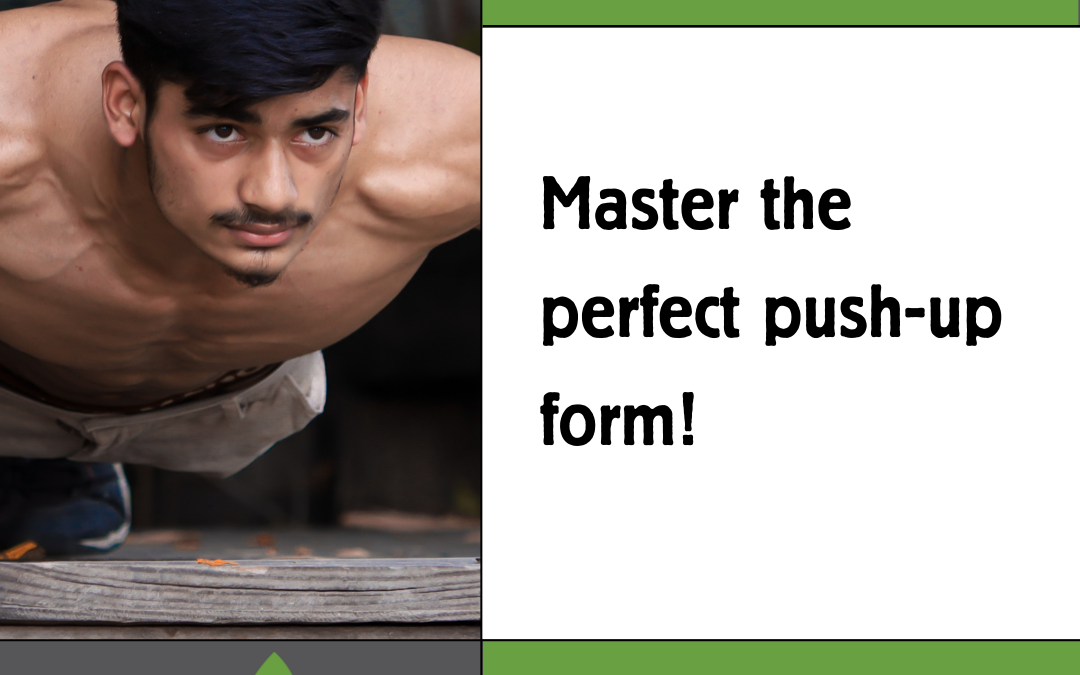
Injury Rehab and Prevention
Push-ups are a cornerstone of fitness, celebrated for their simplicity and effectiveness. Whether you’re a seasoned athlete or just beginning your fitness journey, mastering the this exercise can significantly enhance your strength, endurance, and overall health. This guide will walk you through how to perform a proper push-up, address common pain points, and provide modifications to help you continue progressing in your fitness routine.
Introduction: The Benefits of Push-Ups
Push-ups are more than just an upper-body exercise. They engage multiple muscle groups, including the chest, shoulders, triceps, and core, making them a powerhouse move for full-body strength. Incorporating push-ups into your workout routine can improve muscle tone, enhance cardiovascular health, and increase overall functional fitness.
What is a Push-Up?
A push-up is a bodyweight exercise where you lift and lower your body using your arms while maintaining a rigid plank position. This simple movement is incredibly versatile, offering numerous variations to target different muscle groups and accommodate various fitness levels.

Muscles Worked by Push-Ups
- Chest (Pectorals): The primary muscle group engaged.
- Shoulders (Deltoids): Stabilize and assist in the movement.
- Triceps: Crucial for the pushing motion.
- Core: Keeps your body stable and aligned.
- Back (Latissimus Dorsi and Rhomboids): Provide additional support and stability.
Integrating Push-Ups into Your Workout Routine
To maximize the benefits of this exercise, integrate them into your routine with proper progression:
- Warm-Up: Always start with a warm-up to prepare your muscles and joints.
- Frequency: Aim for 3-4 times a week, allowing rest days in between.
- Sets and Reps: Begin with 2-3 sets of 8-12 reps, adjusting as you gain strength.
- Progression: Gradually increase intensity by adding more reps or trying advanced variations.

What is a Proper Push-Up?
Properly Performing a push-up is crucial to maximize benefits and prevent injury. Here’s a step-by-step guide:
- Start in Plank Position: Place your hands slightly wider than shoulder-width apart, shoulders are directly over wrists, and the body forms a straight line from head to heels.
- Engage Core and Glutes: Maintain a neutral spine by engaging your core and glutes.
- Lower Your Body: Bend your elbows at a 45-degree angle, keeping them close to your body. Lower yourself until your chest nearly touches the floor.
- Push Back Up: Press into your palms and extend your elbows, returning to the starting position. Ensure your body remains in a straight line throughout the movement.
Addressing Pain During Push-Ups
Experiencing pain during exercise can be discouraging, but there are modifications you can make to continue reaping the benefits without discomfort. Here’s how to adjust your form based on common pain points:
Wrist Pain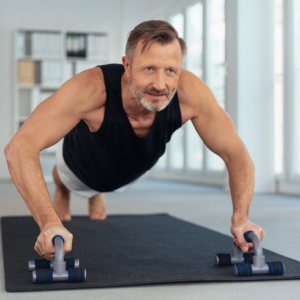
- Modification: Use push-up handles or perform them on your fists to keep your wrists in a neutral position. Alternatively, try incline push-ups with elevated hands on a bench or step.
Back Pain
- Modification: Ensure your core is engaged throughout the movement to prevent sagging hips. If pain persists, try knee or incline push-ups to reduce the load on your lower back.
 Neck Pain
Neck Pain
- Modification: Keep your neck aligned with your spine by looking straight down. Avoid letting your head drop or craning your neck upwards.
 Shoulder Pain
Shoulder Pain
- Modification: Adjust your hand placement to avoid excessive strain on your shoulders. Narrow your grip or try wall push-ups to reduce the load on your shoulder joints.
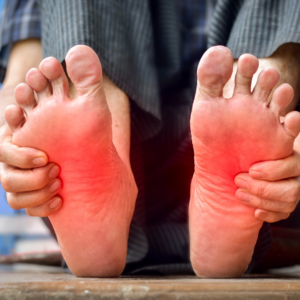 Foot/Ankle Pain
Foot/Ankle Pain
- Modification: Place a folded mat or towel under your feet for added support. Ensure you evenly distribute your weight across your toes.
Push-Up Modifications for Different Fitness Levels
Regardless of your fitness level, there are push-up variations to challenge and help you progress.
Push-Up Beginner Modifications
- Wall Push-Ups: Stand facing a wall, place your hands on the wall at shoulder height, and perform push-ups.
- Knee Push-Ups: Perform push-ups with your knees on the ground, keeping your body in a straight line from head to knees.
- Incline Push-Ups: Place your hands on an elevated surface like a bench or step.

Push-Up Intermediate Modifications
- Standard Push-Ups: Perform push-ups using the proper form described above.
- Wide Push-Ups: Place your hands wider than shoulder-width apart to target the chest more.
- Diamond Push-Ups: Place your hands close together under your chest, forming a diamond shape with your fingers to target the triceps.

Push-Up Advanced Modifications
- Decline Push-Ups: Place your feet on an elevated surface to increase the difficulty.
- Plyometric Push-Ups: Perform explosive push-ups, lifting your hands off the ground at the top of the movement.
- One-Arm Push-Ups: Perform push-ups with one arm behind your back for an intense challenge.

Conclusion
Push-ups are a versatile and effective exercise that can be tailored to any fitness level. By understanding proper form, addressing pain points, and utilizing appropriate modifications, you can continue to benefit from this foundational movement. Remember, consistency and progression are essential. Whether you’re a beginner or an advanced athlete, there’s always room to grow and improve.
Ready to take your fitness to the next level? Start incorporating these variations into your routine today and experience the transformation. Keep pushing forward and stay committed to your health and fitness journey. If you are uncomfortable trying these ideas out on your own, contact Newleaf Total Wellness Centre and book an appointment with one of our Kinesiologists for guidance and support.
Written by: DeVera Nybo, MBA, Owner, Newleaf Total Wellness Centre
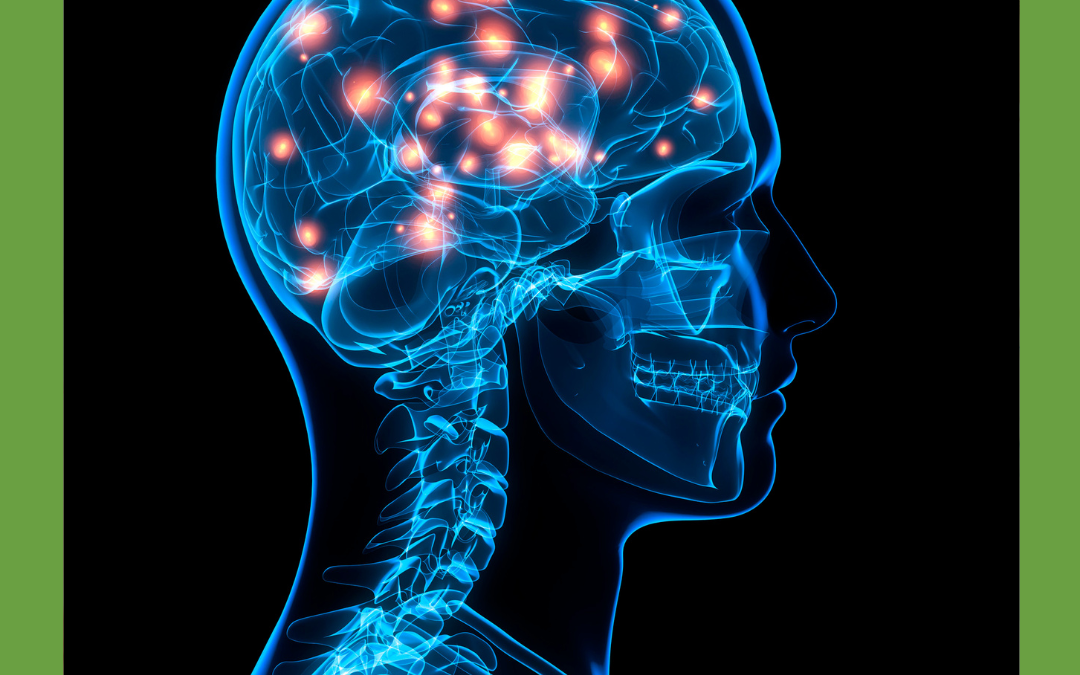
Injury Rehab and Prevention
What is a Traumatic Brain Injury?
Traumatic Brain Injury (TBI) is a complex injury with a broad spectrum of symptoms and disabilities. It occurs when an external force injures the brain, potentially causing long-term complications or death. TBIs can result from various incidents, such as falls, vehicle accidents, sports injuries, or violent assaults. They can range from mild concussions to severe injuries that leave lasting physical and cognitive impairments. The symptoms and effects of a TBI can vary widely, depending on the extent and location of the injury, as well as the individual’s health and age. Understanding the nature of TBIs is essential for recognizing their profound impact on individuals’ lives and navigating the path toward recovery.

What Do People with Traumatic Brain Injury Struggle with in Everyday Life?
The challenges faced by individuals with TBI are multifaceted, affecting virtually every aspect of daily living. These struggles often include:
Cognitive Difficulties
- Memory Loss: Short-term memory issues are prevalent, making remembering recent events or tasks hard.
- Attention and Concentration: Sustaining attention on tasks can be difficult, affecting work and personal life.
- Executive Functioning: Planning, organizing, judgement, and problem-solving abilities may be impaired.
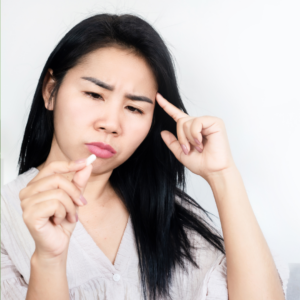
Physical Symptoms
- Headaches and Fatigue: Persistent headaches and constant fatigue are frequent complaints.
- Motor Skills: Coordination and balance may be compromised, leading to difficulties with movement and daily activities.
- Sensory Changes: Sensitivity to light, sound, and touch can increase alongside potential changes in vision and hearing.
Emotional and Behavioral Changes
- Mood Swings: Individuals may experience rapid shifts in mood, including irritability, depression, and anxiety.
- Behavioural Issues: Impulsivity and difficulty controlling emotions can lead to behavioural problems.
- Social Interaction: Forming and maintaining relationships may become more challenging due to the abovementioned symptoms.
Communication Issues
- Difficulty in Speech and Language: Finding the right words can complicate social interactions, making it hard for survivors to express their needs and emotions effectively.
- Cognitive Impairments: The ability to understand and process information may be affected, further exacerbating communication issues.
- Emotional Regulation Problems: Frustration and anxiety make it even more challenging for TBI survivors to engage in meaningful conversations.
Understanding these struggles underscores the necessity of comprehensive and personalized treatment plans to address the unique needs of TBI survivors.

Therapies and Treatments for Traumatic Brain Injury
Advancements in medical science and innovative therapeutic approaches offer new hope for individuals with Traumatic Brain Injury (TBI). Below is a comprehensive list of therapies and treatments that can significantly contribute to the recovery process:
Physical Therapy
Through tailored exercise regimens, Physical therapy enhances strength, coordination, and mobility. This approach helps individuals regain their independence and equips them to perform daily activities more efficiently. The focus is on improving motor skills, balance, and physical function, which are crucial for overall recovery.
Occupational Therapy
Occupational therapy aims to improve the ability to perform everyday tasks by developing adaptive strategies and utilizing specialized equipment. This therapy enhances fine motor skills, cognitive functioning, and sensory integration. The OT may suggest home and work environment modifications to support increased functionality and independence.
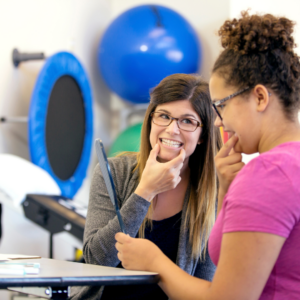
Speech and Language Therapy
In addressing communication difficulties, speech and language therapy aims to improve speech clarity, comprehension, and expressive abilities. Techniques may include exercises to strengthen the muscles used in speech, strategies to improve listening and understanding, and tools to aid in articulating thoughts. This therapy is vital for restoring effective communication skills.
Cognitive Rehabilitation for Traumatic Brain Injury
Cognitive rehabilitation focuses on retraining the brain through structured exercises to improve memory, attention, problem-solving skills, and executive functioning. This therapy may include tasks such as puzzles, memory games, and computer-based cognitive training to enhance mental agility and cognitive performance.
Psychotherapy
Psychotherapy addresses the emotional and psychological impacts of TBI. Through counselling, cognitive-behavioral therapy, and other modalities, individuals receive support to manage mood disorders such as depression and anxiety. Psychotherapy plays a critical role in fostering mental well-being and providing coping strategies for dealing with the challenges posed by TBI.

Medication
Medication can be an essential component in managing symptoms associated with TBI, including pain, spasticity, depression, and anxiety. A carefully managed medication regimen can enhance the overall stability of the recovery process, making symptoms more manageable and improving the quality of life for individuals with TBI.
Emerging Treatments for Traumatic Brain Injury
Ongoing research continues to pave the way for innovative treatments. Promising therapies such as hyperbaric oxygen therapy, stem cell therapy, and neurofeedback are showing potential in aiding recovery and improving outcomes for TBI survivors. These emerging treatments offer exciting prospects for future advancements in TBI care.
By integrating these therapies and treatments, individuals with TBI can experience a more comprehensive and effective recovery journey. Each therapy plays a unique role in addressing the multifaceted challenges of TBI, contributing to improved quality of life and enhanced functional abilities.
Do People with a Traumatic Brain Injury Ever Return to “Normal”?
The question of whether individuals with a TBI can return to their pre-injury state is complex and varies from person to person. Recovery depends on several factors, including the severity of the injury, the quality of medical care, and the support system surrounding the individual. While some people may experience significant recovery and resume their previous lifestyle, others may have to adjust to new limitations and find a “new normal.” It’s essential to understand that recovery is often a long-term process that requires patience, persistence, and comprehensive care.

Hope & Commitment: Key Components of Recovery
Recovery from TBI is often a long and arduous journey, but hope and commitment are vital components that can drive progress. Maintaining a positive outlook and staying committed to a personalized treatment plan can make a significant difference. Celebrating small victories and remaining resilient in the face of setbacks is essential.
In addition, support from family, friends, and healthcare professionals plays a crucial role in fostering a conducive environment for recovery. Emotional support, practical assistance, and encouragement can empower individuals with TBI to persevere and achieve their rehabilitation goals.
Conclusion
Traumatic Brain Injuries are life-altering. Living with a TBI presents numerous challenges, but with the right therapies and unwavering commitment, recovery and a fulfilling life are within reach. The advancements in treatment options provide a beacon of hope, illuminating the way toward improved quality of life and greater independence for TBI survivors.
Empowering yourself with knowledge about these therapies and staying connected with a supportive community can make all the difference. Remember, every step forward, no matter how small is a victory on the path to recovery.
If you or someone you know is dealing with a TBI, reach out to Newleaf Total Wellness Centre or other support networks to explore the best possible paths to recovery.
Written by: DeVera Nybo, MBA, Owner, Newleaf Total Wellness Centre
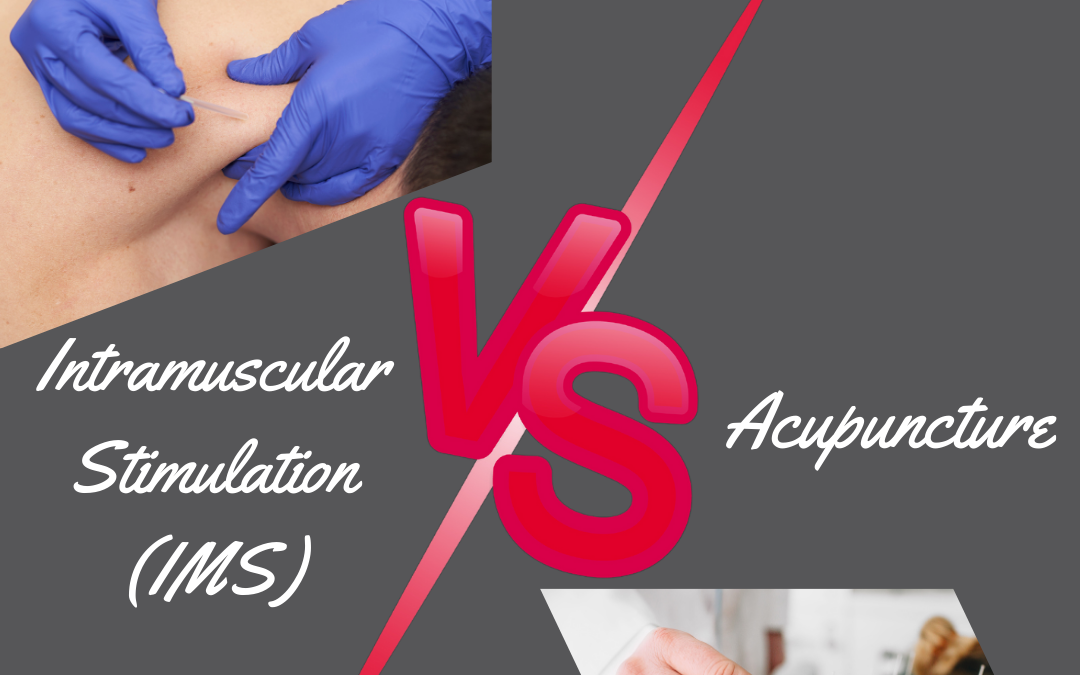
Therapy Options Explained
Intramuscular stimulation (IMS or Dry Needling) and acupuncture stand out as prominent therapies for pain and musculoskeletal conditions in alternative medicine. Both involve the insertion of needles, yet they stem from entirely different philosophies and target conditions. Whether you’re a health enthusiast or someone exploring alternative treatments, understanding the nuances between IMS and acupuncture can guide your wellness choices more effectively.
Comparison of Treatment Techniques
IMS and acupuncture might appear similar at first—both use needles, after all—but the similarities end there. IMS is a treatment grounded in Western medical science, focusing on diagnosing and alleviating neuropathic muscle pain. It involves inserting needles into tight muscle bands or trigger points causing pain. There’s no traditional philosophy guiding the process; instead, it’s all about the physical release of muscle tension and its neurophysiological effects.
Conversely, acupuncture is an ancient Chinese practice based on the flow of Qi (energy) through meridians in the body. Practitioners insert needles at specific points along these pathways to restore balance and promote health. This method is less about targeting particular muscle knots and more about realigning the body’s energy systems.
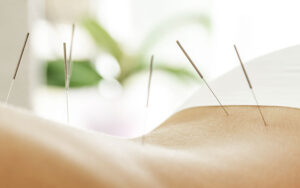
Conditions Targeted by IMS and Acupuncture
The conditions treated by IMS and acupuncture often overlap but generally have different focuses. IMS primarily addresses chronic pain, especially when the cause is neuropathic or related to muscle knots and tension. It’s particularly effective for conditions like back pain, tennis elbow, and fibromyalgia.
Acupuncture, with its broader philosophical approach, tackles a wide array of ailments beyond just musculoskeletal issues. It is an effective treatment for everything from headaches and menstrual cramps to stress, anxiety, and even infertility. The evidence base for both treatments varies, with acupuncture having substantial research backing its effectiveness across various conditions.

Needle Type and Technique
IMS uses needles that are very similar to acupuncture but may be slightly thicker (.3mm vs .25mm) and can be inserted deeper into the muscle tissue. IMS targets trigger points or “knots” within muscles. You should feel a deep ache or a twitching sensation as the practitioner moves the needle up and down through the tightened band of muscle. This technique elicits a twitch response from the muscle, releasing tension.
Acupuncture needles, on the other hand, are slightly thinner and shorter, designed for minimal discomfort. Acupuncture aims to balance energy flow (qi) by inserting needles at precise points along the body’s meridians, offering a gentle therapeutic experience. The needles typically remain in place for the whole session. Gentle manipulations may accompany them to enhance the treatment’s energy-balancing effects.
Patient Experience of Pain or Discomfort Between IMS and Acupuncture
The experience of receiving IMS can be more intense due to the focus on eliciting muscle twitches. This might result in brief, acute discomfort when the needle hits a trigger point, often followed by immediate relief as the muscle relaxes.
Acupuncture aims for a relatively painless insertion, with patients sometimes not feeling the needle. Patients generally describe the experience as deeply relaxing, with occasional mild sensations of tingling or heaviness around the needle sites.

Practitioner Profiles
Practitioners of IMS are usually trained physiotherapists with specific certifications in this technique. They have a solid anatomy, physiology, and pathology background, applying this knowledge to identify and treat specific musculoskeletal issues through IMS.
Acupuncturists undergo extensive training in traditional Chinese medicine, including the theory of Qi, meridians, and the holistic view of the body. In British Columbia, acupuncturists need licensure to meet professional standards for safe, effective treatment.
Similarities Between Acupuncture and IMS
Despite their differences, both therapies share common ground in their holistic approach to health, focusing on treating the body as a whole rather than isolated symptoms.
- Pain Management: Both are effective in managing various types of pain, from musculoskeletal issues to chronic headaches and stress-induced discomfort.
- Holistic Approach: They view health and wellness comprehensively through the lens of energy flow and balance in acupuncture or muscle function and nerve health in IMS.
- Individualized Treatment: Treatments are highly tailored, with practitioners adjusting their approach based on each patient’s unique condition and needs.

Conclusion
While IMS and acupuncture both offer benefits for various conditions, the choice between them comes down to individual needs and treatment goals. IMS often suits those with specific, localized muscle pain seeking relief with a foundation in Western medical principles. Acupuncture might appeal more to those looking for a holistic approach to wellness, encompassing physical, mental, and emotional health.
Before deciding, consult with professionals in both fields to discuss your concerns and treatment expectations. With knowledge and professional advice, you’ll be better placed to choose the therapy that best aligns with your wellness path.
Written by: DeVera Nybo, MBA, Owner Newleaf Total Wellness Centre

Conditions We Treat
Chronic pain—a phrase that millions of people across the globe know all too well. Chronic pain is not just a symptom. It’s a constant companion that affects every aspect of life. But what if there were ways to manage and potentially reduce this pain? What if you could address root causes instead of masking pain with medication? This blog post will explore the nature of chronic pain, its causes, and holistic approaches to treatment that go beyond traditional medicine.

Understanding Chronic Pain
Chronic pain is pain that persists for more than three months, often despite medication or treatment. It can stem from various conditions, including arthritis, back problems, migraines, or countless other health issues. Unlike acute pain—a body’s method of signalling harm—chronic pain can linger long after the injury has healed. Chronic pain hints at the complex interplay between the body and the brain.
The Terrible Triad: Suffering, Sleeplessness, Sadness
Chronic pain often brings along unwelcome companions—suffering, sleeplessness, and sadness, forming a ‘terrible triad‘. This triad creates a vicious cycle where pain worsens sleeplessness and sadness, which in turn can increase the perception of pain. Understanding this interconnection is crucial in managing chronic pain effectively.

The Brain’s Role in Chronic Pain
The brain plays a pivotal role in the perception and variation of pain. It acts as the central processing unit where pain signals are interpreted and experienced. Far from being a simple response to physical injury, pain involves complex exchanges between neural pathways. When an injured part of the body pain sends a pain signal, it travels through the nervous system to the brain. Here, the thalamus, cortex, and limbic system, analyze the signal, and process pain’s emotional and cognitive aspects.
This means that your emotional state, cultural background, and earlier experiences can significantly influence how you feel and manage pain. Furthermore, the brain can lessen the perception of pain by releasing natural painkillers, such as endorphins. The brain plays a critical role in the perception of pain and the body’s ability to suppress it. Understanding the brain’s role in pain perception opens avenues for new pain management strategies. Incorporating strategies that target neural systems, offers hope for chronic pain sufferers.
Seeking Natural Relief for Chronic Pain
For those who have been through the wringer of medical treatments and are wary of the side effects of traditional pain medications, there’s hope in natural therapies. These treatments aim to relieve pain and restore overall well-being.
Physiotherapy
Physiotherapy offers a pathway to improved quality of life through expert-led, personalized treatment plans. This science-backed approach addresses the discomfort and dives into the root causes of chronic pain. By integrating various techniques, from manual therapy to tailored exercise programs and education on body mechanics, physiotherapy empowers individuals with the tools they need to manage their pain effectively. It’s about more than symptom relief; it’s about fostering a partnership between patient and therapist to build a foundation for a more active and pain-free lifestyle. Through an empathetic and educational lens, physiotherapy helps patients understand their body and take proactive steps towards health.
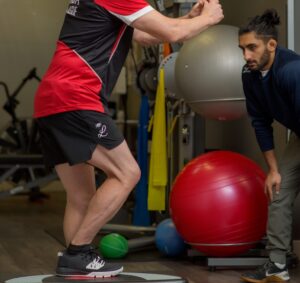
Chiropractic Care
Chiropractic care is both holistic and non-invasive. At the heart of this practice is a profound understanding of the body’s intricate systems and how they can be harmonized for health. Chiropractic treatments can alleviate pain by improving the functional mobility of the joints and spine, reducing nerve irritation. This method addresses the symptoms and targets the underlying issues, fostering a healing environment within the body. If you need a break from the relentless grip of chronic pain, chiropractic care offers a promise. Chiropractors help patients reclaim control over their well-being, emphasizing the body’s innate ability for self-healing and resilience.
Acupuncture
Acupuncture involves the insertion of ultra-thin needles into specific points on the body. Researchers believe this technique stimulates the nervous system and activates the release of the body’s natural painkillers. For many sufferers of chronic conditions, such as arthritis, back pain, and migraines, acupuncture offers a pathway to relief without the reliance on pharmaceuticals. By engaging the body’s healing mechanisms, acupuncture reduces pain and improves overall well-being. It’s a testament to the power of integrating traditional healing practices with modern medical understanding, empowering individuals to explore alternative, non-invasive options for pain management.

Manual Osteopathy
Manual Osteopathy is a hands-on approach to healthcare emphasizes the body’s innate ability to heal, focusing on restoring balance and promoting overall wellness. Practitioners engage with the body’s structure and function to alleviate pain and enhance mobility. This method addresses the symptoms and dives deep to find and treat the root causes of pain. By adopting a holistic perspective, osteopathy empowers individuals, offering them a pathway to reclaim their quality of life without relying solely on medication.
Naturopathic Medicine
Naturopathic doctors are playing an increasingly pivotal role in the lives of those suffering from chronic pain, where traditional medicine often reaches its limits. By considering the entire individual—physically, emotionally, and mentally—naturopathy seeks to ease symptoms, identify and treat the root causes of pain. This method differs from the conventional model, focusing on symptom management often through pharmaceuticals, which can sometimes lead to dependency or unwanted side effects. Through personalized treatment plans that may include dietary changes, herbal medicine, physical therapies, and stress reduction techniques, naturopathic doctors empower patients to take charge of their health and well-being.

Massage Therapy
Massage therapy goes beyond mere relaxation, targeting the root of pain to foster healing and provide relief. By improving circulation, massage therapy helps the body’s natural recovery process, nourishing tissues starved of nutrients and oxygen due to prolonged tension and inflammation. Furthermore, it plays a crucial role in releasing endorphins, the body’s natural painkillers. Significantly, it also aids in reducing stress and anxiety, which are often intertwined with chronic pain. Through skilled manipulation of muscles and tissues, massage therapy alleviates discomfort. It empowers individuals to engage more fully in their daily activities, improving their quality of life.
Counselling
Psychotherapy and hypnotherapy can address the emotional and psychological aspects of chronic pain, breaking the cycle of the ‘terrible triad.’ Chronic pain is a complex and multifaceted condition, changing the physical body and the emotional and psychological well-being of those affected. Counselling offers a vital lifeline, providing strategies and support to help individuals cope more effectively with their pain. It goes beyond symptom management, addressing the profound emotional strain that chronic pain can impose. Through counselling, patients learn resilience-building techniques, mindfulness practices, and cognitive-behavioural strategies, empowering them to reclaim their lives from the clutches of pain.

Nutritional Counselling
For individuals grappling with chronic pain, the search for relief often leads down various paths, from medication to physical therapy. Yet, one avenue that may not be immediately obvious is nutritional counselling. Healthcare professionals are increasingly recognizing that our food can profoundly affect our body’s inflammatory processes and pain response. By working with an expert who understands the complex relationship between diet and chronic pain, sufferers can learn how to make informed dietary choices.
Food is medicine. Certain foods help reduce inflammation, enhance healing, and alleviate some of the discomfort associated with chronic conditions. This method does not stand as a solitary solution but rather complements other treatments, offering a holistic strategy to empower individuals to control their health and well-being. Through education and personalized guidance, nutritional counselling is vital in managing chronic pain, underscoring the significant role that diet plays in our overall physical health.
A Personal Journey of Managing Chronic Pain
Consider the story of a 70-year-old woman who walked into Newleaf Total Wellness Centre, lost and overwhelmed by three decades of chronic pain. After her physician left his practice and closed his clinic, she was suffering from medication withdrawals, and was desperate for a new approach. At Newleaf, she found a team ready to listen and tailor a comprehensive plan to address her pain holistically. Today, she enjoys a clearer mind and a more manageable pain level, proving it’s never too late to seek help and regain control over one’s life.

How Newleaf Can Help Combat Chronic Pain
At Newleaf Total Wellness Centre, we understand that every chronic pain sufferer’s story is unique. Our interdisciplinary approach, founded on patient-centred care, combines various treatments to help our patients become stronger, braver, and better. Whether at the beginning of your pain management journey or seeking alternative therapies, our team guides you toward a higher quality of life. It doesn’t matter where you start. Take the first step, and we will guide the ones that follow.
If you or someone you know is struggling with chronic pain, remember there is hope. Holistic approaches to pain management can offer relief and a pathway to a more vibrant, fulfilling life. Book a consultation to learn more.
Written By: DeVera Nybo, MBA, Owner, Newleaf Total Wellness Centre
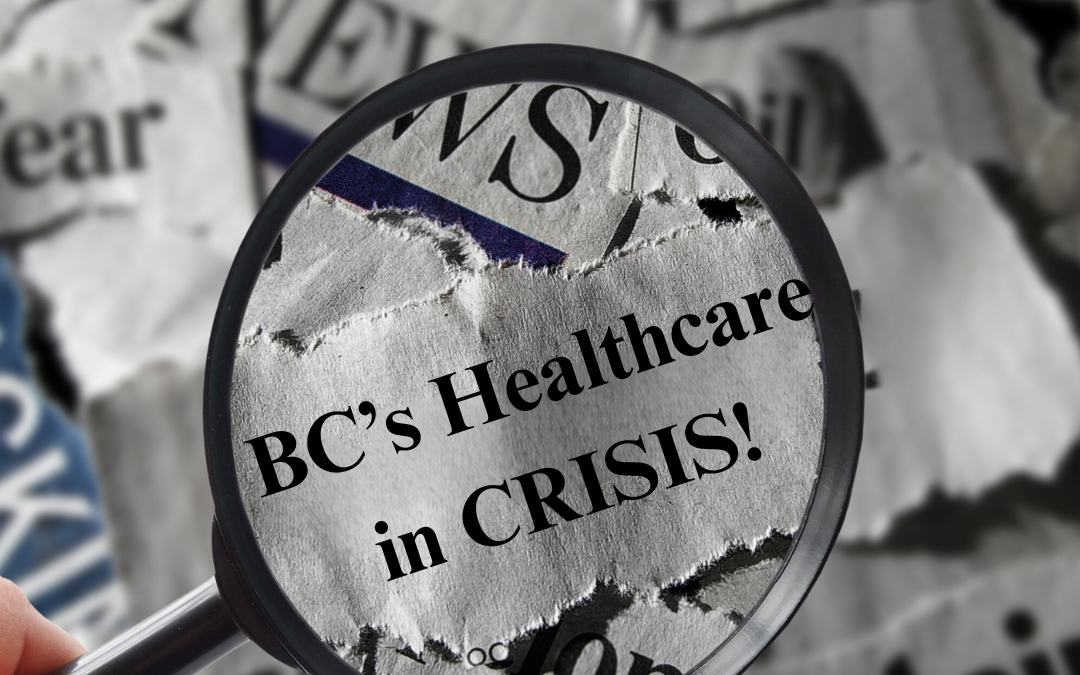
Therapy Options Explained
In British Columbia, accessing healthcare has become a growing challenge for many residents. A staggering 59% report difficulties finding a family doctor, and many of these individuals are on waiting lists for a week or more. The average wait at a walk-in clinic has now reached 58 minutes, which is more than double the national average. Patients presenting with increasingly complex conditions, compound this issue, making a multifaceted approach to healthcare necessary. Enter paramedical services.
Amid ongoing healthcare difficulties, preventative medicine and paramedical services stand out as a source of optimism. The impact these services have in lightening the load on the healthcare system is enormous. Adopting preventative care tactics makes it possible to lessen the need for medical treatments.
By preventing diseases before they occur, we can alleviate the strain on our healthcare system and improve the quality of life for countless individuals.
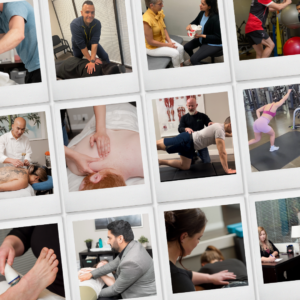
Paramedical Services: Allies in Prevention
Paramedical services are instrumental in the preventative care framework. Services such as physiotherapy, chiropractic care, nutritional counselling, and acupuncture enhance recovery and well-being and often circumvent the need for more extensive medical interventions. Additionally, they embody a holistic view of healthcare, emphasizing the importance of treating the whole individual rather than focusing solely on symptoms. Early engagement with these services can significantly reduce hospital admissions and the demand for emergency departments.
- Physiotherapy helps prevent musculoskeletal issues and enhances mobility, fostering quicker recovery from injuries or surgeries.
- Chiropractic Care emphasizes spinal health and pain management, potentially reducing the necessity for pain medication and invasive treatments.
- Nutrition Counseling provides education on healthy eating habits and managing and preventing chronic conditions like diabetes and heart disease.
- Psychology and Counseling services play a pivotal role in crisis prevention, stress management, and promoting overall mental health.
- Massage Therapy and Acupuncture offer pain relief, reduce stress, and contribute to overall health, complementing conventional treatments
- Naturopathic Doctors can recommend and prescribe essential nutrients like vitamin B12 and folate, which play a crucial role in wellness. Deficiencies in such nutrients can lead to significant health complications, underscoring the importance of a proactive approach to health that prioritizes nutrition, exercise, and stress management.

The Path Forward
Our healthcare system faces unprecedented challenges and clearly requires innovative solutions. Preventative medicine, underscored by the vital contributions of paramedical services, represents a promising avenue toward a sustainable future in healthcare. Collaborative efforts between primary care providers, specialists, and community-based services are crucial in streamlining care, preventing hospital readmissions, and optimizing the utilization of resources.
Educating the public and advocating for integrated healthcare models can shift the reactive to proactive health management paradigm. By emphasizing prevention, early intervention, and collaborative care, we can address the underlying factors driving the healthcare crisis and forge a healthier, more resilient society.
The Newleaf Total Wellness Centre stands at the forefront of this crucial endeavour, embodying the principles of interdisciplinary collaboration and preventative care. Together, we can transform the healthcare landscape in British Columbia and beyond, ensuring a more robust, healthier future for all. Book an appointment to see what a difference our services can make for you.
Written By: DeVera Nybo, MBA, Newleaf Total Wellness Centre
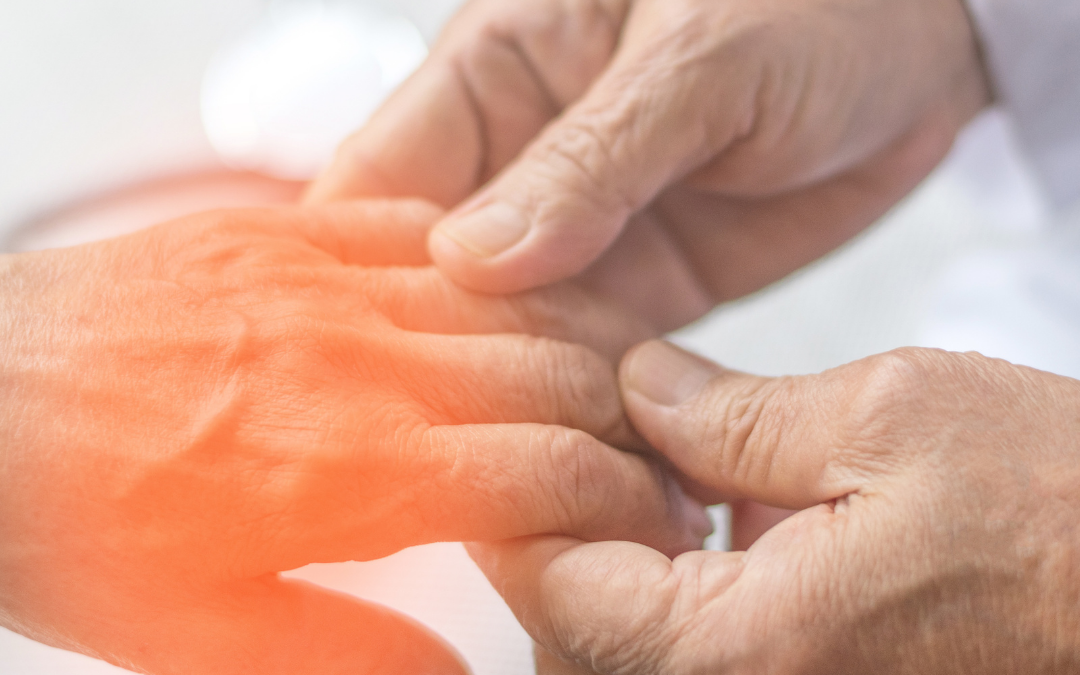
Conditions We Treat
Experiencing numbness, tingling, or burning in your extremities can be discomforting and, at times, alarming. Often called “pins and needles,” these sensations can occur for various reasons, from sitting in one position for too long to more serious underlying health conditions. At Newleaf Total Wellness Centre, we understand the complexities of these symptoms and advocate for a comprehensive, patient-centred approach to diagnosis and treatment.

Numbness, Tingling and Burning OR Pins and Needles
Pins and needles, medically referred to as paresthesia, can range from mild and intermittent to severe and chronic, influencing the quality of life. The origins of these sensations are diverse, from poor circulation to certain neurological diseases. Given this variety, a multidisciplinary approach is often the key to unlocking effective treatment strategies and long-term relief.
- Nerve compression: Prolonged pressure on a nerve, as experienced when sleeping on an arm all night, can lead to temporary numbness and tingling.
- Neuropathy: Damage to nerves, often from conditions like diabetes, can cause chronic symptoms.
- Circulatory issues: Poor blood circulation can make your limbs feel cold and numb or even lead to a burning sensation.
- Nutrient deficiencies: Lack of vitamins like B12 can affect nerve health and contribute to these uncomfortable sensations.
- Injuries: Trauma to nerves, such as from an accident, can result in acute or long-term symptoms.
- Neurological diseases: Conditions like multiple sclerosis or stroke can manifest as numbness or tingling in the limbs.

Dr. David Veltman-Robert, Chiropractor
The Role of Interdisciplinary Care in Resolving Numbness
Given the variety of potential causes, it’s no surprise that a multidisciplinary approach may be necessary. Here’s how specialists from different healthcare streams can contribute:
Chiropractors
Chiropractic care focuses on diagnosing and treating neuromuscular disorders, primarily through manual adjustment or manipulation of the spine. For patients experiencing numbness and tingling, chiropractors can help by relieving pressure on the nervous system, improving spinal movement function, and enhancing nerve communication.
Physiotherapists
Physiotherapy aims at restoring, maintaining, and making the most of a patient’s mobility, function, and well-being. Through a combination of exercises, hands-on therapy, and education, physiotherapists can strengthen the body’s musculoskeletal system, improve circulation, and reduce nerve compression.

Ed Middleton, Physiotherapist
Acupuncturists
Acupuncture, an ancient Chinese medicine practice, involves inserting fine needles into specific points on the body. It stimulates the body’s natural painkillers and increases blood flow. For those experiencing paresthesia, acupuncture can effectively alleviate pain, reduce inflammation, and promote nerve health.
Manual Osteopaths
Manual osteopathy involves using gentle hands-on techniques to restore optimal body function. Osteopaths assess and treat movement restrictions in your body tissues that prevent you from being healthy and fit. Their approach can significantly benefit individuals with numbness and tingling by enhancing blood circulation and decompressing areas around affected nerves.
Finding Relief for Numbness, Tingling and Burning: Simple Steps
While professional help is sometimes necessary, there are simple lifestyle adjustments you can make that may provide relief:
- Regular exercise to improve circulation
- Change positions frequently to reduce nerve compression
- A balanced diet to prevent nutrient deficiencies
- Mindful habits to reduce stress and enhance overall nerve health
However, seeking medical advice is crucial if you’re experiencing persistent, recurring, or severe symptoms.

Recognizing When Numbness, Tingling and Burning is Serious
While experiencing occasional pins and needles is common and usually harmless, persistent or severe symptoms require immediate attention. If you experience paresthesia alongside symptoms such as muscle weakness, difficulty moving, or changes in bowel and bladder function, it’s crucial to seek emergency medical attention. These could be signs of a more severe condition, like a stroke or spinal cord injury.
Taking the First Step
Living with numbness, tingling, and burning in your extremities doesn’t have to be your norm. At Newleaf Total Wellness Centre, we empower our patients through education and proactive and preventative care. By understanding the root cause of your symptoms and leveraging our team’s interdisciplinary expertise, we can create a personalized treatment plan that addresses your unique needs.
Remember, your path to a higher quality of life begins with a single step. If you’re ready to explore how our team can assist you in managing or overcoming pins and needles, we invite you to partner with us. Together, we can work towards achieving your goals for a healthier tomorrow. Book a consultation.
Written by: DeVera Nybo, MBA, Owner, Newleaf Total Wellness Centre

Conditions We Treat
Bursitis is a condition that doesn’t discriminate. Whether you’re an athlete pushing your body to its limits, part of our wiser elderly population experiencing the trials of age, or simply someone going about their daily life, the risk of encountering bursitis is real. But with an understanding of what bursitis entails, its causes, and the treatments available, we can empower ourselves to prevent or manage this condition effectively.
What is Bursitis?
Bursitis is the inflammation of the bursae, tiny, fluid-filled sacs throughout our bodies. These sacs act as cushions, reducing friction between bones and soft tissues and creating smooth, pain-free movement. When these bursae become inflamed, movement can become painful and challenging, affecting your quality of life.
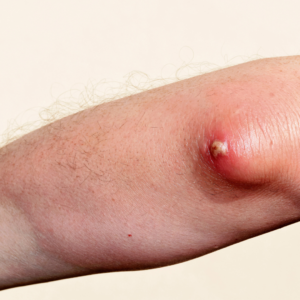
Finding the Causes of Bursitis
Bursitis can result from various activities and conditions that put excessive pressure on the bursae over time. This includes repetitive motions or positions that irritate or pressure the bursae. Athletes, for instance, often get bursitis in joints that perform frequent repetitive motions, such as the shoulder, elbow, or knee.
Age is another factor, as wear and tear on the bursae increase over the years. Additionally, traumatic injuries can cause immediate bursitis, and certain systemic diseases, such as rheumatoid arthritis or gout, can predispose individuals to inflammation of the bursae.
Cures and Treatments
Fortunately, there are multiple routes to alleviating the discomfort of bursitis. Non-prescription anti-inflammatory drugs (NSAIDs) can reduce pain and swelling. Applying ice to the affected area during the first stages of pain can also help manage inflammation.
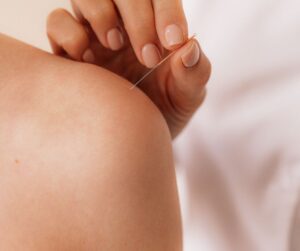
Acupuncture for Bursitis Relief
Acupuncture is a therapy recognized for its analgesic effects. By targeting specific points based on the location of your bursitis—whether in the hip, knee, or shoulder—acupuncture can reduce inflammation and stiffness while promoting the drainage of excess fluids. This method uses the body’s natural pain-relief mechanisms, including the release of endorphins, to provide significant relief.
Traditional Chinese Medicine (TCM)
TCM practices such as acupressure and Chinese herbal therapy may help combat bursitis. Corydalis Analgesic Tablets, aloe vera, herb plasters, and herbal teas with meadowsweet, horsetail, and willow bark are some treatments used to alleviate pain and inflammation. The personalized combination of these therapies can offer holistic relief from the symptoms.
The Power of Hydrotherapy and Homeopathy
Alternating hot and cold compresses—an easy-to-follow hydrotherapy method—can remarkably help bursitis patients. Homeopathic remedies like Ruta graveolens have also shown promise in easing the discomfort associated with the condition.
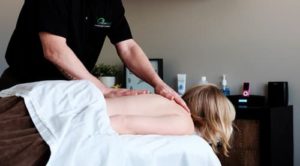
Massage Therapy for Bursitis
A skilled therapist provides massage treatments to relieve bursitis’s acute and chronic symptoms, especially in the shoulder. Techniques such as gentle Swedish massage strokes, kneading, and trigger point massage reduce inflammation, improve range of motion, and soothe related stress and anxiety. These methods target the pain and encourage healing by increasing circulation and breaking down scar tissue.
Chiropractic Care
Joint manipulation offered by our chiropractic care specialists can loosen soft tissues, restore flexibility, and relieve pressure on the affected bursa. Chiropractic adjustments can provide considerable relief when combined with physiotherapy treatments like ultrasound and shockwave stimulation.

Physiotherapy: The Frontline of Bursitis Management
Typically, the first approach to managing bursitis involves physiotherapy. This non-invasive treatment focuses on strengthening the muscles surrounding the affected joint, alleviating pain and preventing future occurrences. Physiotherapy exercises, tailored to individual needs, play a crucial role in recovery, often spanning approximately 4 to 6 weeks. Your physiotherapist may prescribe specific exercises to prevent bursitis from progressing to more severe conditions like frozen shoulder syndrome.
Corticosteroid Injections: A Closer Look
Your doctor may recommend corticosteroid injections if other treatments do not fully resolve your symptoms. Esteemed for their ability to provide rapid relief from pain by reducing inflammation, these injections are particularly effective in treating conditions like trochanteric bursitis, commonly seen in older adults. However, it’s important to note that the benefits of corticosteroid injections tend to be temporary, and excessive use might lead to tissue damage.
The Balance Between Immediate Relief and Long-Term Health
It’s crucial to understand that corticosteroid injections offer quick pain relief but don’t address bursitis’s root cause. This is where the expertise of our interdisciplinary team at Newleaf Total Wellness Centre becomes invaluable. We emphasize a holistic approach, combining immediate relief methods with long-term rehabilitation through physiotherapy. This blend aims to improve joint function, enhance muscle strength, and correct posture and ergonomic issues, paving the way for sustainable healing.

An Individualized, Collaborative Approach
Our treatment plans are highly personalized, recognizing the unique nature of each case of bursitis. We consider a range of factors, including the severity of symptoms, patient preferences, and overall health, ensuring that we address every aspect of your condition. Collaboration is at the heart of our practice; physiotherapists work closely with specialists such as orthopedic doctors, rheumatologists, and pain management experts to ensure comprehensive care.
Understanding Bursitis Prevention
The key to preventing bursitis is minimizing the stress placed upon your joints—a critical consideration for athletes, professionals, or individuals whose daily activities involve repetitive motions. Here are essential strategies to incorporate into your routine to shield your joints from undue strain:
- Employ Proper Techniques
Applying the correct techniques is fundamental whether you’re engaging in sports or repetitive work tasks. This might include adjusting your posture or changing your approach to physical activities to distribute pressure more evenly across your joints.
- Incorporate Regular Breaks
Taking regular breaks during prolonged activity helps alleviate pressure on the bursae. Short rest intervals can be remarkably effective in preventing the onset of bursitis by giving your joints time to recover from continuous stress.
- Strengthen Supporting Muscles
Exercises tailored to bolster muscle groups relevant to your daily activities can support your joints. By strengthening these muscles, you enhance your overall physical health and reduce the burden on your joints, mitigating the risk of developing bursitis.
- Maintain a Healthy Weight
Extra weight can exert added pressure on weight-bearing joints, such as the knees and hips, increasing the likelihood of bursitis. Maintaining a healthy weight through balanced nutrition and regular exercise minimizes this risk.
- Opt for Anti-inflammatory Nutrition
Inflammation is a core part of bursitis, so making dietary choices that fuel or fend off inflammation is incredibly impactful. Working with a holistic nutritionist to develop meal plans that avoid inflammatory foods while being enjoyable and sustaining can play a pivotal role in preventing bursitis. Tailored nutrition supports joint health and helps your overall wellness.
Conclusion
In wrapping up our comprehensive discussion on bursitis, it’s clear that this condition touches many lives, irrespective of age or lifestyle. However, our knowledge about bursitis—its causes, treatments, and preventive measures—illuminates a path forward that can help manage and even prevent this painful condition.
At Newleaf Total Wellness, we believe in empowering our clients with knowledge and offering a multidisciplinary approach to treatment that addresses the root causes, not just the symptoms. Bursitis, though common, doesn’t have to be a condition that limits your quality of life. Individuals can return to daily activities comfortably and efficiently with the right approach, guidance, and care.
Remember, every step to understanding and caring for your body is a step towards a healthier, more active life. We’re here to support you on that journey, providing the expertise and care needed to move beyond pain and toward optimal well-being. If you are suffering with bursitis, book an appointment at Newleaf today!
Disclaimer
The content on the Newleaf Total Wellness Centre blog, including insights on various holistic health practices, serves purely educational purposes. Before adopting any new health regimen, including treatments or herbal remedies mentioned here, consult with a healthcare professional to ensure it’s suitable for you. Our blog does not substitute for professional medical advice, diagnosis, or treatment. We encourage meaningful discussions with your healthcare provider to secure the best care for your well-being.




















 Neck Pain
Neck Pain Shoulder Pain
Shoulder Pain Foot/Ankle Pain
Foot/Ankle Pain
































